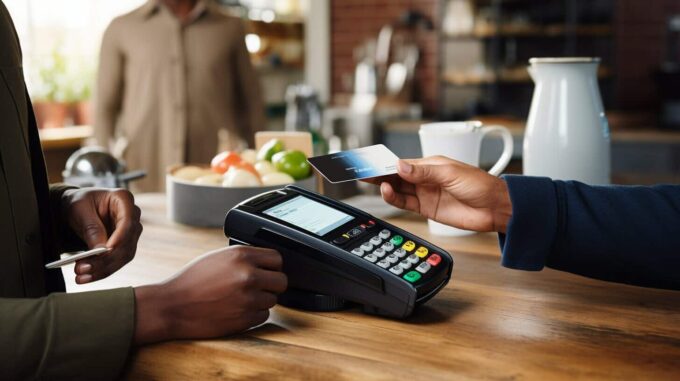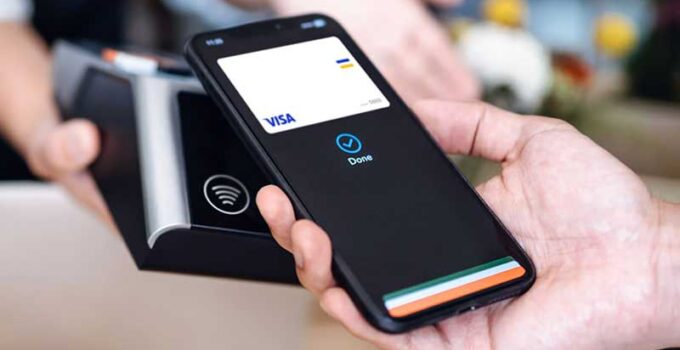Mobile card payment solutions are transforming how businesses and customers engage in transactions.
With the increasing importance and rapid growth of mobile payment processing, businesses can offer more convenient and secure payment options.
The key benefits for businesses include increased sales, faster transactions, and improved customer satisfaction, while customers enjoy ease of use and enhanced security.
What is Mobile Card Payment Processing?

Mobile card payment processing refers to the technology and methods used to facilitate transactions via mobile devices. It encompasses various types of transactions such as mobile wallets, credit card readers, and in-app purchases.
Mobile wallets, like Apple Pay and Google Pay, allow users to store their card information digitally and make payments with their smartphones. Mobile credit card readers enable businesses to accept card payments using a smartphone or tablet.
In-app purchases occur within mobile applications, providing seamless transaction experiences for users. This technology is crucial for modern businesses, offering flexibility, convenience, and efficiency in handling payments.
Types of Mobile Payments
Now let us talk about different mobile payments.
Point of Sale (mPOS)

Mobile Point of Sale (mPOS) systems are portable devices that enable businesses to accept payments anywhere. These devices can be attached to smartphones or tablets, transforming them into payment terminals.
Examples of mPOS devices include Square Reader, PayPal Here, and Clover Go. They are widely used in various businesses such as retail stores, restaurants, and outdoor markets. mPOS systems enhance the customer experience by offering quick and easy options, reducing checkout times, and increasing sales opportunities.
Wallets
Mobile wallets, such as Apple Pay, Google Pay, and Samsung Pay, allow users to store their credit and debit card information on their smartphones. These digital wallets provide a secure and convenient way to make contactless payments by simply tapping the phone on a compatible terminal.
The benefits of mobile wallets include enhanced security through tokenization, faster transactions, and the ability to carry multiple cards without physical bulk. Usage statistics indicate a steady increase in adoption rates, driven by the growing acceptance of contactless payments in retail and other sectors.
E-commerce
Mobile e-commerce refers to online shopping transactions conducted via mobile devices. It encompasses purchasing goods and services through mobile-optimized websites or dedicated shopping apps. The scope of e-commerce is vast, influencing online retail and consumer behavior significantly.
With the rise of smartphones, consumers are increasingly shopping on the go, leading to a surge in e-commerce sales. This shift has compelled businesses to optimize their websites for mobile use and develop user-friendly apps to enhance the shopping experience.
Peer-to-Peer (P2P) Payments
Peer-to-peer (P2P) mobile payments enable individuals to transfer money directly to each other using mobile apps. Popular examples include Venmo, PayPal, and Cash App. These services are widely used for various purposes, such as splitting bills, sending gifts, and paying for services.
The benefits of P2P mobile include convenience, speed, and the elimination of physical cash handling. They are particularly useful for small transactions and have become an integral part of the digital economy, especially among younger demographics.
Step-by-Step Implementation
Now let us talk about the implementation.
Identify Business Needs

Source: aarp.org
The first step in implementing mobile payment processing is to identify the specific needs of the business.
It involves determining the types of payments to be accepted, such as credit cards, debit cards, and mobile wallets, as well as any specific software or hardware requirements.
Businesses should also consider their growth and scalability needs to ensure the chosen solution can accommodate future expansion.
Choose a Processor
Selecting the right payment processor is crucial. Businesses that accept card payments on phone and evaluate potential processors based on features, supported payment methods, fee structures, and user reviews.
Popular providers include Square, PayPal, and Stripe, each offering various solutions tailored to different business needs. Comparing these options will help businesses find the most suitable and cost-effective processor.
Set Up an Account
Setting up an account with a payment processor typically involves providing business details, submitting necessary documentation, and obtaining any required hardware.
The setup process can vary in duration but usually takes a few days to complete. Ensuring a smooth setup process is vital for quickly beginning to accept these payments.
Offer Diverse Options
To cater to a wide range of customer preferences, businesses should offer multiple payment options, including credit and debit cards, and mobile wallets.
Providing diverse payment methods enhances customer satisfaction and can lead to increased sales by accommodating different payment preferences.
Analyze and Iterate
Regular analysis of transaction data and customer behavior is essential for optimizing payment processes.
Businesses should review their payment data periodically to identify trends, address issues, and make informed decisions.
Iterating on payment strategies based on these insights helps improve the overall customer experience and operational efficiency.
Wallets vs. Payments

Source: investopedia.com
Mobile wallets and payment systems, though often used interchangeably, have distinct differences that set them apart. Mobile wallets, such as Apple Pay and Google Pay, store digital versions of credit and debit cards. This enables users to make contactless payments by simply tapping their phones on compatible payment terminals.
The primary advantage of wallets is their convenience and enhanced security. They use tokenization and biometric authentication, such as fingerprint or facial recognition, to protect users’ financial information and prevent unauthorized access.
In contrast, payment systems encompass a broader range of payment methods.
These include Point of Sale (POS) systems, in-app purchases, and Peer-to-Peer (P2P) transactions. POS systems are commonly used in retail environments, allowing businesses to accept card payments using devices that can be stationary or portable. In-app purchases facilitate seamless transactions within apps, providing a smooth and integrated user experience.
P2P transactions, enabled by services like Venmo and PayPal, allow individuals to transfer money directly to each other, making it easy to split bills or send money to friends and family.
Payment systems offer versatility and wide acceptance across different transaction types and business models.
While wallets provide a convenient way to store and use payment cards, systems can support various payment methods, making them suitable for a wide range of applications.
Wallets can integrate seamlessly with broader payment systems, creating a unified and secure payment experience that combines the best of both worlds.
The Bottom Line
Embracing mobile payment solutions can significantly benefit businesses by enhancing transaction speed, security, and customer satisfaction. Staying updated with the latest payment trends is crucial. Businesses are encouraged to adopt payment systems to stay competitive and meet the growing demands of modern consumers.







